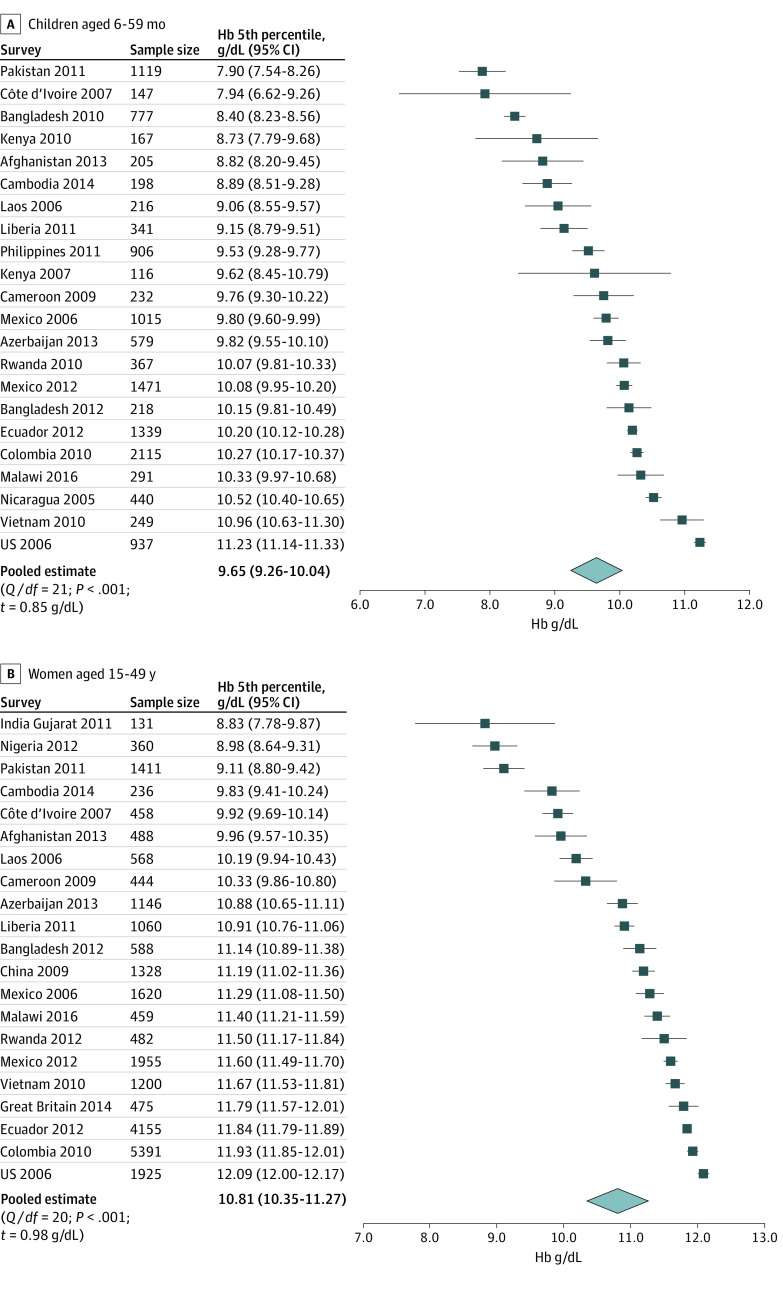Figure 1. Forest Plots Showing Survey-Specific and Pooled Fifth Percentile (95% CI) of Hemoglobin (Hb) in a Multinational Sample of 13 445 Apparently Healthy Preschool Children Aged 6 to 59 Months and 25 880 Nonpregnant Women Aged 15 to 49 Years.
Healthy is defined as no inflammation (C-reactive protein ≤0.5 mg/dL [to convert to milligrams per liter, multiply by 10] or α-1-acid glycoprotein ≤1 g/L), no iron deficiency (ferritin <12 ng/mL for children and <15 ng/mL for women [to convert to micrograms per liter, multiply by 1.0]), no vitamin A deficiency (retinol-binding protein or retinol <20.1 μg/dL [to convert to micromoles per liter, multiply by 0.0349], when available), and no known malaria. SEs (95% CIs) around Hb fifth percentile were based on the Wald SE of the estimated proportion below the quantile at a design effect of 1 for simple random sampling. Hb values were adjusted for altitude, when available (Afghanistan, Azerbaijan, Colombia, Ecuador, Great Britain, Laos, Malawi, Mexico 2006 and 2012, and Rwanda); otherwise, no adjustment was applied or the altitude was less than 1000 m, so no adjustment was needed. Hb values were further adjusted for smoking among women (Colombia, Ecuador, Mexico 2006 and 2012, Great Britain, and US). World Health Organization Hb cut points for anemia are 11.00 g/dL for children and 12.00 g/dL for nonpregnant women. To convert Hb to grams per liter, multiply by 10. Q / df indicates test of Cochrane Q statistic for heterogeneity at the given df.

